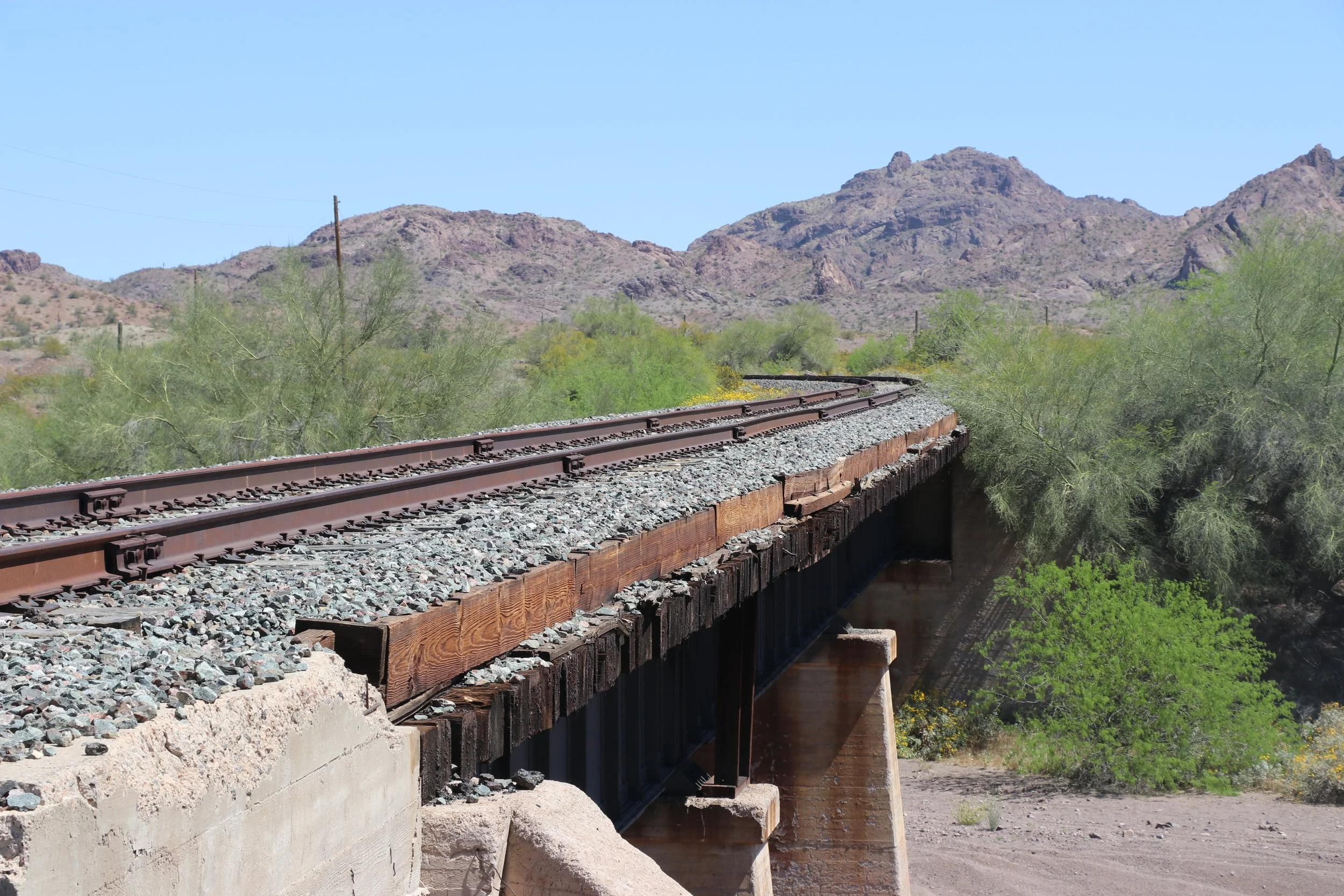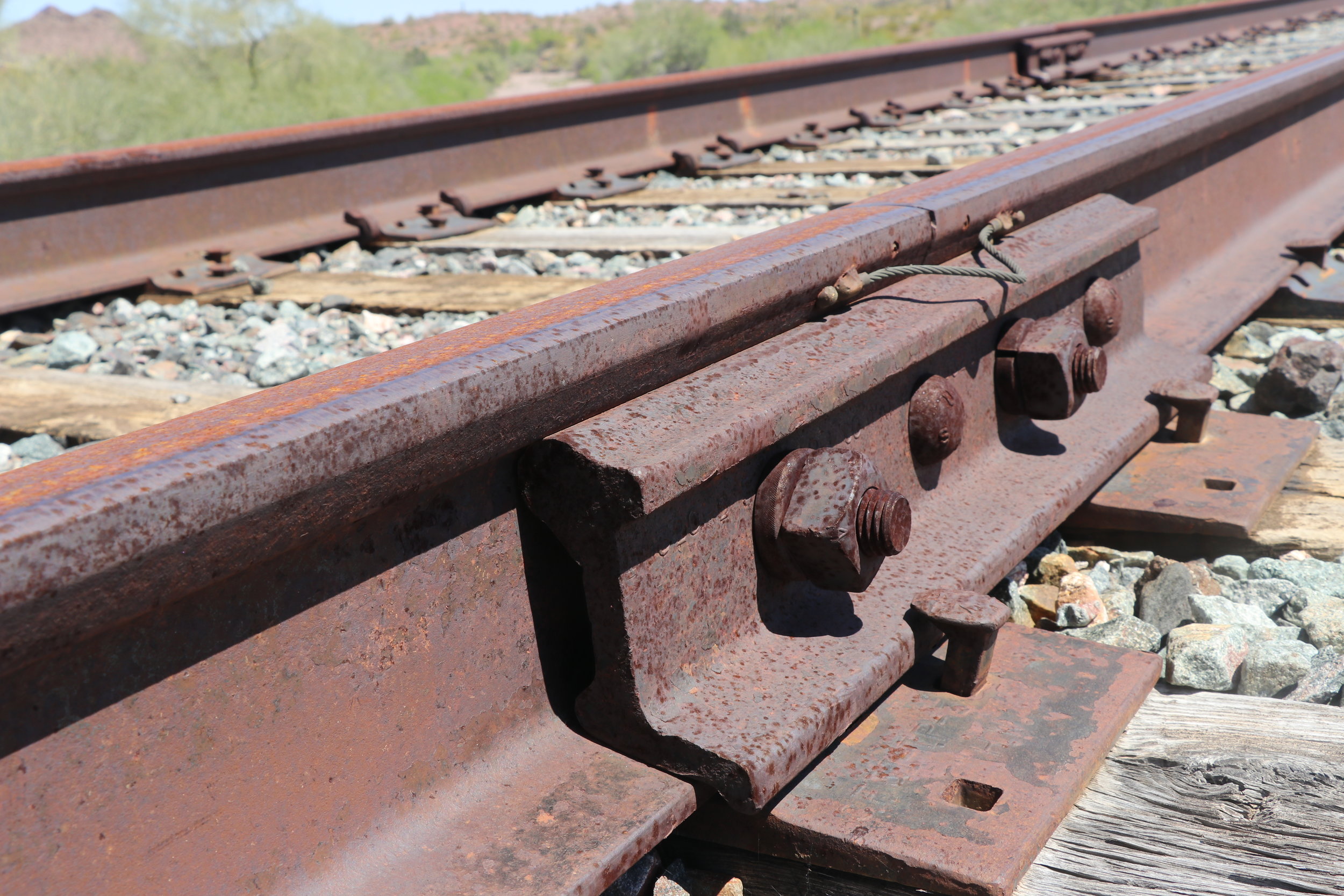Maricopa County
Amtrak Derailment Site
The westbound Sunset Limited was intentionally derailed here in the remote desert west of Buckeye.
The 1995 Amtrak Derailment site is sabotage/terrorist attack on the Sunset Limited passenger line in the Arizona desert outside of Palo Verde. This article is not referring to the 1993 derailment that occured in the Big Bayou Canot bridge in Alabama. This derailment resulted in one death, over seventy injuries, and remains unsolved to this day.
It was October 9th, 1995, when a westbound Amtrak Train, known as the Sunset Limited, was traveling from New Orleans to Los Angeles. At around one in the morning the train reached a remote stretch of desert 50 miles west of Phoenix. The train rounded a nearby curve as it approached a bridged wash crossing over Quail Springs Wash. When the train reached the bridge, it derailed, sending passenger cars careening into the dry wash 30 feet below. Both locomotives and eight of the twelve cars left the track. One person -- a sleeping car attendant named Mitchell Bates was killed during the crash. 78 others were injured, 12 of which had serious injuries.
The train was stranded here in the desert– a long way from help – in the middle of the night. Emergency services responded from Buckeye, but with the remote location and lack of main roads, they struggled to reach the derailment site. Local farmers immediately helped out by clearing roads to access the site. As passengers awaited rescue under the full moon, they found typed notes. The notes hinted that this crash was retaliation for the ATF and FBI actions during the Waco Siege of 1993. They were signed by a terrorist group called the ‘Sons of the Gestapo’.
In the hours and days following the incident, the FBI launched a full-fledged investigation. They quickly found that the notes were part of a cover up. The investigation found that the derailment was caused by someone with specialized knowledge of the rail system. 29 spikes were removed at the bridge and the left rail was shifted less than 4” inward allowing the train to derail here on this blind curve. Wires were used to keep the track connected electronically meaning there was no warning to the train engineer as they approached.
It is thought that the derailment was actually caused by a disgruntled railroad employee, or someone who wanted to rob a train in a desolate location. The site was thoroughly picked through for clues and eventually cleaned up. The line was active briefly following the accident, however, just one year later, Amtrak shifted its route further to the south and the line was soon abandoned. Today, the line remains inactive, and is used for storage only.
This deliberate attack could have been anyone – and remains unsolved today. In 2015, the FBI raised the reward to over $300,000. Today – no memorials or monuments remain. Keen-eyed visitors can still find clues of the accident today. The most obvious signs of the derailment remain on the concrete embankment on the west end of the track, which was damaged during the accident. Underneath the bridge, braces remain in place where the bridge was damaged. On the topside, newer, slightly discolored wooden railroad ties remain. Scratches in other trestles and damage to the rails themselves make you wonder if these were caused by the derailment or just part of everyday wear and tear. Nevertheless, this remains one of the more obscure historical sites that remains in the Arizona desert that not many people know about.
Sources:
Hajek, Daniel. “20 Years Later, Sabotage Of Amtrak's Sunset Limited Still A Mystery.” NPR, NPR, 12 Apr. 2015, www.npr.org/2015/04/12/399159965/20-years-later-sabotage-of-amtraks-sunset-limited-still-a-mystery.
“1995 Palo Verde, Arizona Derailment.” Wikipedia, Wikimedia Foundation, 10 June 2019, en.wikipedia.org/wiki/1995_Palo_Verde,_Arizona_derailment.









